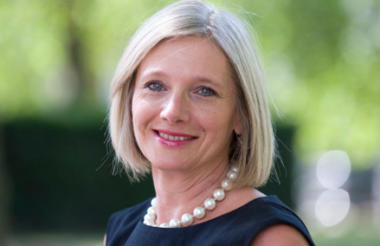Helen Stephenson announced earlier this month that she will step down as chief executive of the Charity Commission in July 2024 after seven years. Many in the sector have expressed gratitude to the regulator’s longest-serving CEO and Stephenson herself said she was “exceptionally proud of my time at the Commission so far”. Here are a few closer reflections on both ups and downs of her tenure as she enters her final 11 months in the job.
The invisible work of the Charity Commission’s CEO
Most of the work of the Commission’s CEO is invisible to an outsider. We don’t see the way she manages her staff. We don’t see how she handles the board. We don’t see the internal processes of decision-making that may result in improved effectiveness in different dimensions. It’s relatively rare to find systematic, objective evidence about the Commission’s impact and how it changes.
As a result, impressions based on her public messaging (as discussed below) can be inadequate. For beneath the public messaging lies a largely invisible whirlwind of activity. In Stephenson’s case, that is said to have resulted in a firmer grip on casework, with backlogs managed down; better services such as a contact centre open five days per week, and the user-friendly five-minute guides to help busy trustees and staff get quickly to the basics of the Commission’s advice.
I have no reason to doubt the Commission’s claims that she will leave a talented and cohesive staff team, and that the Commission is respected by other Whitehall departments as delivering good value for money.
Relationships with the charity sector
Stephenson also said that the relationship between the charity sector and the regulator has “definitely improved” since she joined the Commission. The charity sector is so vast and varied that such a statement has limited meaning, but in so far as NCVO and ACEVO represent important parts of the sector, it is encouraging that both speak of a positive and open approach on the part of the Commission to working with them during and since the COVID pandemic.
As Stephenson has herself acknowledged, it’s a pity that it took the pandemic – two and a half years after she arrived as CEO – before more regular and better communication with these umbrella bodies began. There is now, nevertheless, a feeling amongst national umbrella bodies and their allies that engagement and listening by the Commission is better than it was even a couple of years’ ago.
Has the Commission become more open and accessible to different parts of the sector across a wider front? Does the Commission engage more with critics rather than freeze them out? Perhaps we can look forward to yet more progress in Stephenson’s final year.
Public messaging
For all its limitations, this is the way most people in the wider sector and beyond hear and judge the Commission’s CEO.
Looking back at Stephenson’s public messages, three strong plus points strike me.
Her personal enthusiasm for the work of charities comes across consistently and palpably.
From early on she has championed the Commission’s supportive and preventive work, as well as investigation and compliance, binning the simplistic mantra of the Shawcross years that the role of the Commission was “essentially a policeman”.
And she has consistently defended the right of charities to engage in political activities in support of their charitable objects, as set out in CC9 – a good anchorage in subsequent culture wars.
Her greatest misfortune
Stephenson was unlucky to arrive as CEO when the Commission was quite preoccupied with the abortive effort to raise part of its funding from charities themselves. She seemed to expend time and effort leading this wild goose chase for much of her first two years, before in the end it was abandoned.
Her greatest misfortune, however, was the appointment of Tina Stowell as chair of the Commission in February 2018, just a few months after she had become leader. Even the strongest or deftest CEO can only influence, not control, his or her chair. However, fairly or not, the world is bound to assume that much of the messaging of the Stowell era was a joint enterprise with Stephenson, who articulated a lot of it in her own name.
Rather than sticking to the regulation of charities as defined in law, the Commission appointed itself the guardian of “charity” – as if love, compassion, altruism and kindness were the distinctive preserve of charities alone, rather than seen in many non-charitable organisations, our informal relationships with neighbours, our families and many public services. It was a disastrous recipe for confusion and mission creep. Even in her departure announcement, Stephenson spoke of the Commission’s role as “to protect this thing called charity (sic) that we as a nation and society value”.
The constant message from the leadership was that charities were failing to live up to the public’s supposed expectations of behaviour, that how charities behaved was as important as what they achieved, that meeting such supposed public expectations was more important than accountability to beneficiaries, donors or other stakeholders (public benefit was exiled from most of the leadership’s messaging), that it wasn’t enough to have a worthy (ie charitable) cause or conform to charity law and formal guidance, because what really mattered was that vague “spirit of charity”.
The public was supposed to believe that charities should show higher standards of behaviour and integrity than other sectors, and the Commission was even at times said to “represent the public” (as opposed to the public interest). All these propositions were either untenable or contestable and imprecise.
The conclusions and accompanying press releases of high-profile investigations (not least that into the Oxfam safeguarding scandal) and the Commission’s series of reports into public trust and confidence, repeatedly prioritised reinforcing these predetermined missionary messages over fairness and careful analysis, as I and others documented in detailed articles over the years.
Most of this has thankfully now vanished into oblivion, but we had to endure it for the majority of Stephenson’s tenure as CEO to date.
A good ending
Stephenson’s first six years have, therefore, had their ups and downs. But under Orlando Fraser as chair, the Commission’s messaging is generally calmer, clearer, wiser and based on the remit given by parliament and on the Commission’s true area of authority and expertise. There is more engagement and listening to important sector bodies within the framework of the Commission’s independence, and this openness can develop further. The gains in effectiveness, less visible to outsiders, are significant and can continue.
If the CEO has some responsibility for the downs, she also deserves credit for the ups. Perhaps her last year will be the best of all?












